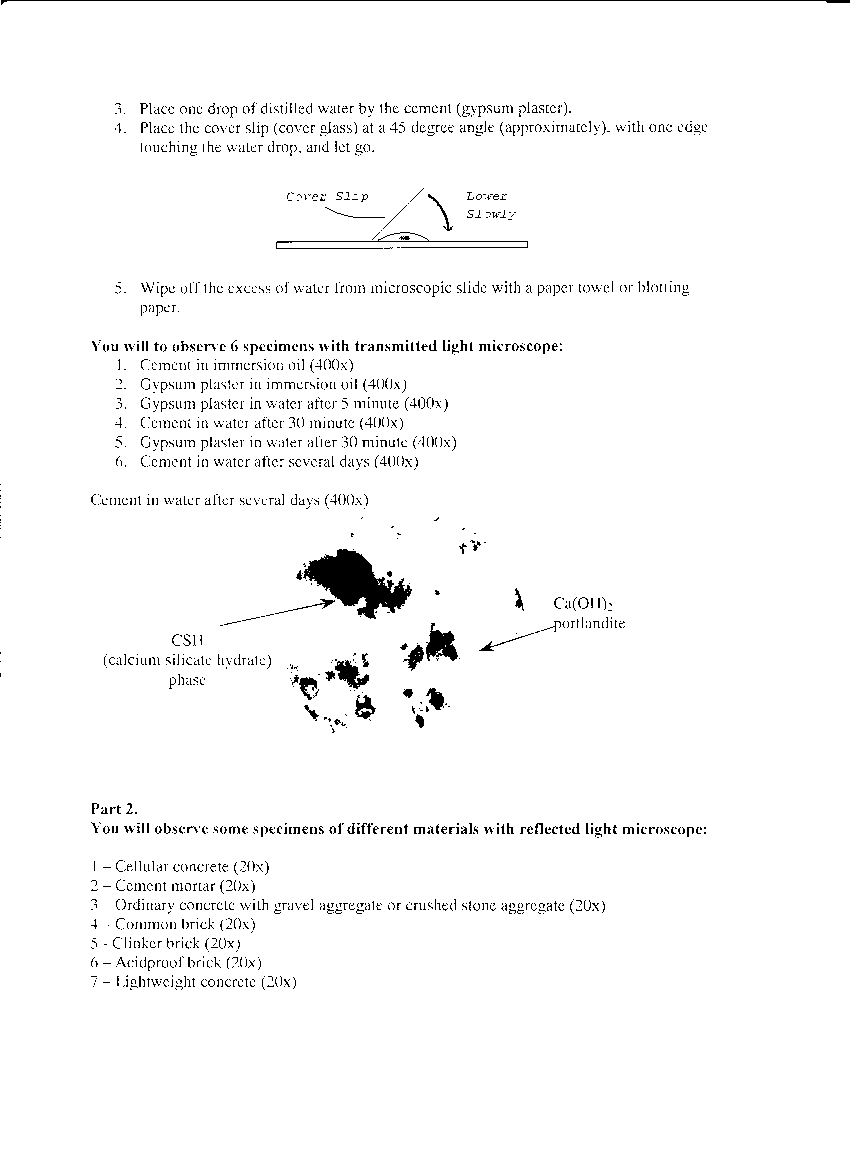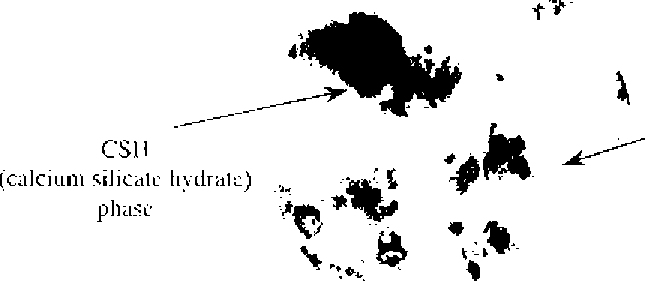chemia mikroskopoweºdania spoiw0004

3. Place one drop of distilled water by ihe cement (gypsum plaster).
4. Place the covcr slip (covcr glass) at a 43 degree Äingk (apprr>xiniui:c]y)_ with one edge louehing ihe waLcr drop, and !et go.

5. Wipe olTlhe excess o i' walor from inicroscopic slide with a paper towel or biot ling
paper.
Vuu will to £jÅ>$crvD 6 specimens with transmilted lighl mkroscope:
1. Cement iii irrmiersion oil (400x)
Gvpsum plaster in immersion oil (40(JxJ
3. Gypsum plaster in water after 3 minutÄ (400x)
4. Cement in wat ci after 30 minutÄ (4U0x)
5. Gypsum plasler in waler a li er 30 minule (4(K)x) d, Cement in water after scvcral days (400x)
Cement in waLcr after scvera] days (40Qx")

Ca(Ol I):
____porH;:indite
Part 2.
You will ob.$crvc some sptcimtns of different materia]* w ith reflectcd light microscope:
1 - Cel kil ar eonerete (20x)
2 - Cement mortar (20x)
3 Ordinary conureLe wiLh gravd aggregale or erushed sÅone a gg rogate (20x)
4 ⢠CotintKU) briek (2Q\)
3 - Clinkor briek (2tko
d - Aeidproof briek f?.0x)
7 - Ughtweight concrete (20x)
Wyszukiwarka
Podobne podstrony:
chemia mikroskopowe?dania spoiw0001 Microscopic examin:jtion of binders and sfructure of mortars, co
chemia mikroskopowe?dania spoiw0003 Co m mon brick f I00x) fi red clav Å*rnins of sand conlraeiioti
chemia mikroskopowe?dania spoiw0002 1. Arm -serves as boi h the sap port ofthc bod
esquema azul( stranded cottons Backstitch Place one of the towelling pieces on a f
80 (25) Spectacles care Use vinegar to clean your glasses: Place a drop of vinegar on the lens. then
72903 sa 06 Exercise 4.âBiceps and Forearms Stand as in photo, place thc palm of one band over the p
Ittman 19 PHYSICAL CULTURE AND BHCATHING. >0 Exercisc No. 7. Stand ercct and place fiand on one s
scbb13 MASSAGE 3 Photo by luirkin Itros., London, W.CA. STAND in a comfortahlc position. Place one h
image001 RAIDERS of theSOLAR FRONTIER By A. BERTRAM CHANDLER OrÅy one QfOup of delendoit itood botwo
koliber II (1) Please refer to this color list for each afghan square. If morÄ than one skein of flo
koliber II (4) Please refer to this color list for each afghan square. If morÄ than one skein of flo
wiÄcej podobnych podstron